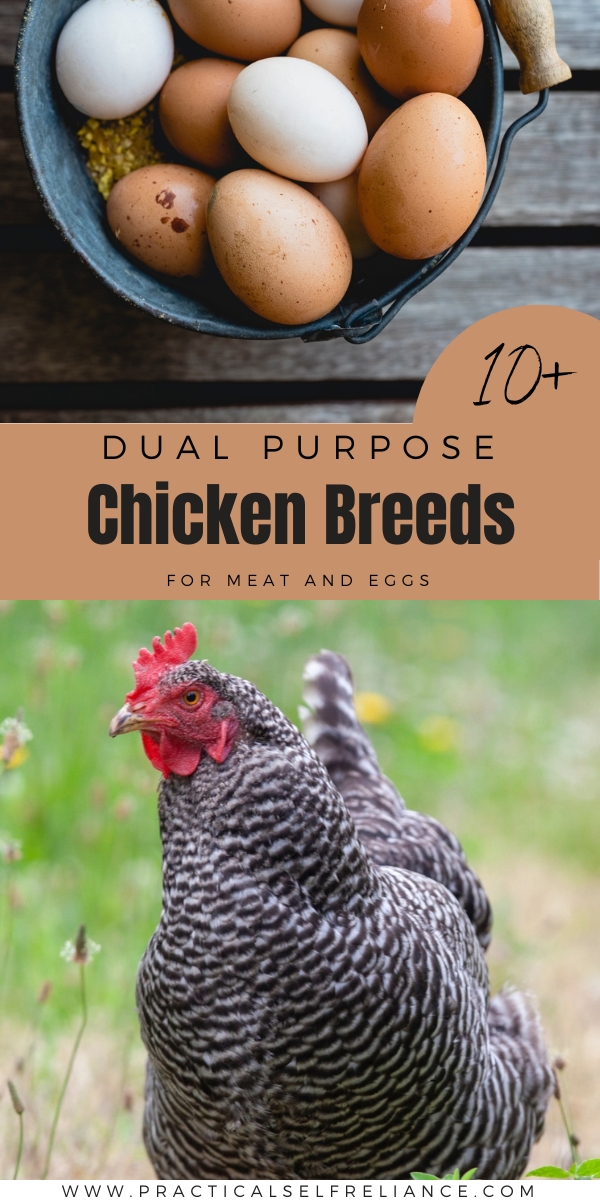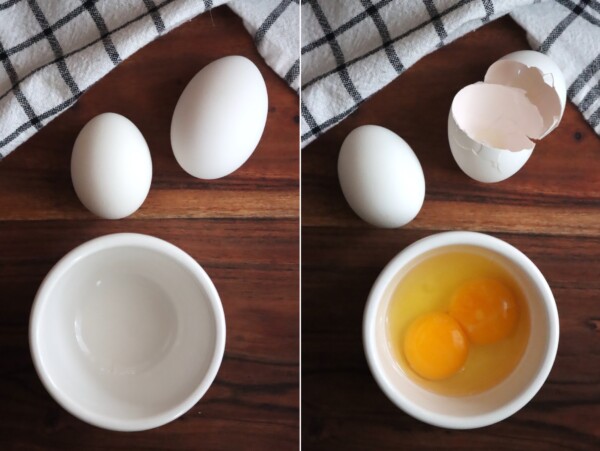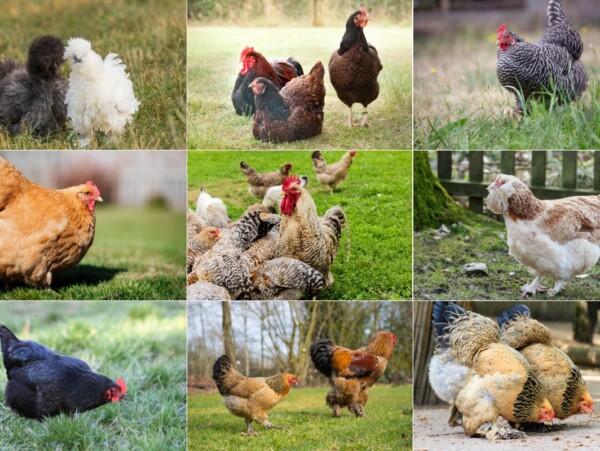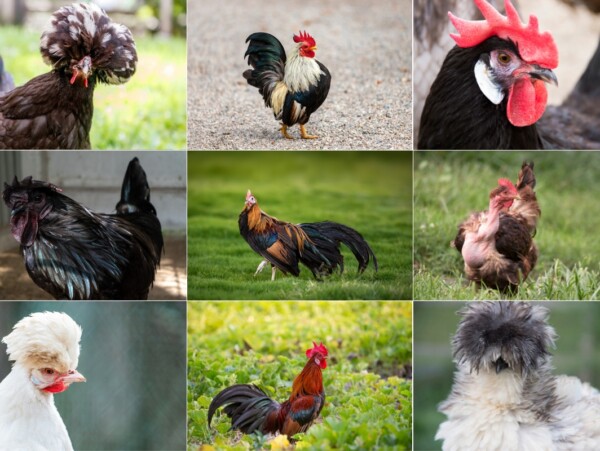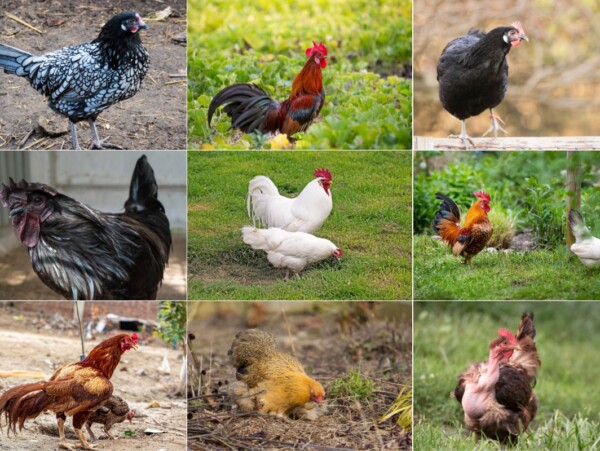Affiliate disclosure: This post may contain affiliate links. Please see our Privacy Policy.
Dual purpose chicken breeds are a great way to harvest both eggs and meat from the same flock. These heavy bodied breeds lay plenty of eggs, but still have enough meat on them to make it worth the harvest. Many of these heritage breeds have been bred so that they still yield tender meat, even after a few seasons of laying.
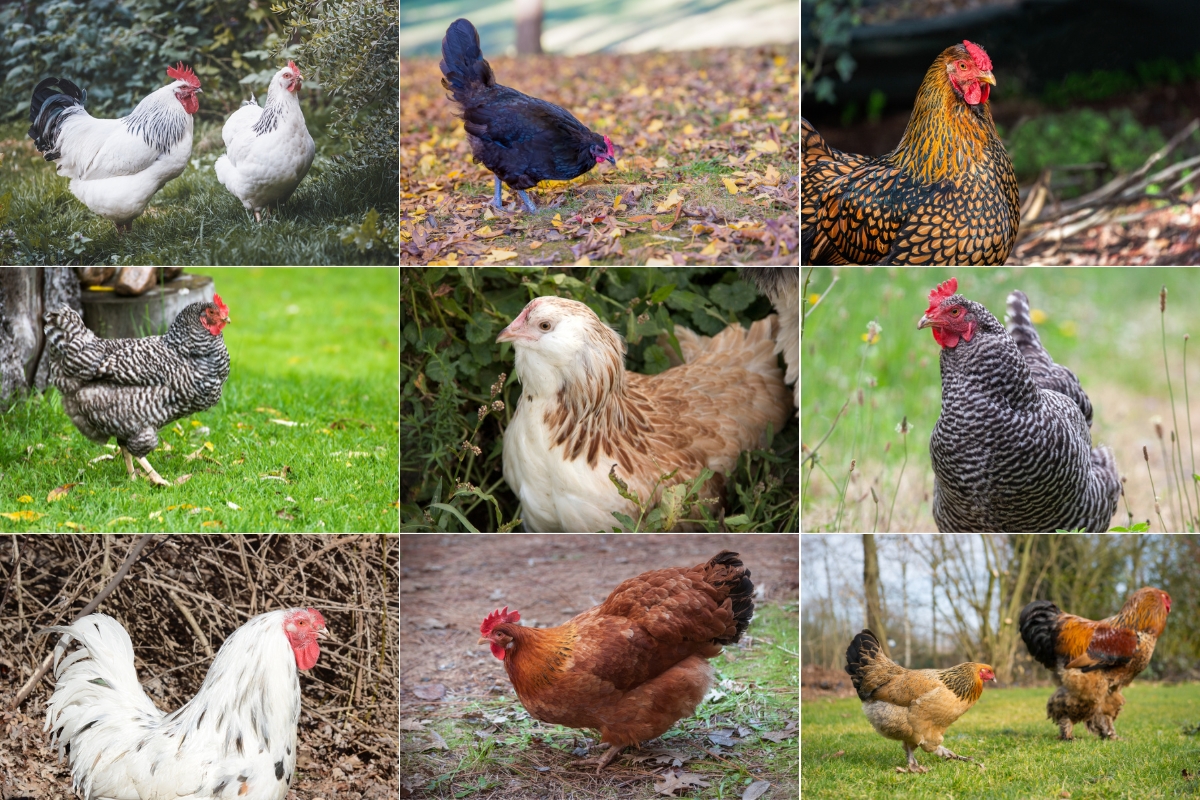
This article is written by Rea Yoh, a freelance writer who grew up in rural Illinois, raising backyard chickens. She graduated with honors in Biology and Science, Technology, and Society from Brown University, and her background in research helps her get to the heart of any question. She has a passion for animals, the environment, and sustainable living.
Chickens come in all shapes, sizes, and specialties– some have been bred for their beautiful feathers and ability to command attention in the show ring, others for their ability to lay tons and tons of eggs. Usually, breeds that are the best layers tend to produce less meat, and meat birds tend to lay fewer eggs. Dual-purpose breeds are a perfect balance of productivity and versatility and are great for homesteaders that want to make the most of their space. Dual-purpose chickens are the breeds that are used for both egg and meat production. As a plus, many of these chickens also make great companions and are easy to raise!
There are a few things to consider when it comes to dual-purpose birds, like the amount of space you have, the amount of meat or eggs your family eats, how quickly they mature, and the amount of money you’re willing to spend on feed. Thankfully, dual-purpose breeds save you space because you don’t have to keep two separate flocks for your meat and egg birds. This guide will give you a good idea of the requirements of the listed breeds.
List of Dual Purpose Chicken Breeds
All of these dual purpose chicken breeds lay plenty of eggs and still yield delicious meat too!
- Rhode Island Red
- Plymouth Rock (Barred Rock)
- Sussex
- Orpington
- Australorp
- Wyandottes
- Chantecler
- Faverolles
- Dominique
- Brahma
Rhode Island Red
The Rhode Island Red is possibly the best-known dual-purpose breed. They’re great layers, as Rhode Island Red strains are used in a lot of the commercial egg industry. They start laying at 16-20 weeks and rarely go broody. Rhode Island Reds reach table size at around 16-20 weeks and produce a sizable amount of meat, reaching 6-8 pounds.
What’s great about Rhode Island Reds is how thrifty and easy to care for they are. They’re amazing foragers, saving you a bit of money that you would have otherwise used for feed. Rhode Island Reds are also very hardy, tolerating both the heat and cold. These chickens do well in most spaces, both confined or free.
- Temperament: Active, friendly
- Size: Medium, 6-8 lbs
- Eggs Per Year: Up to 300
- Egg Size: Medium to large
- Egg Color: Light brown
- Lifespan: Five or more
- Time To Maturity: 16-20 weeks (meat and eggs).
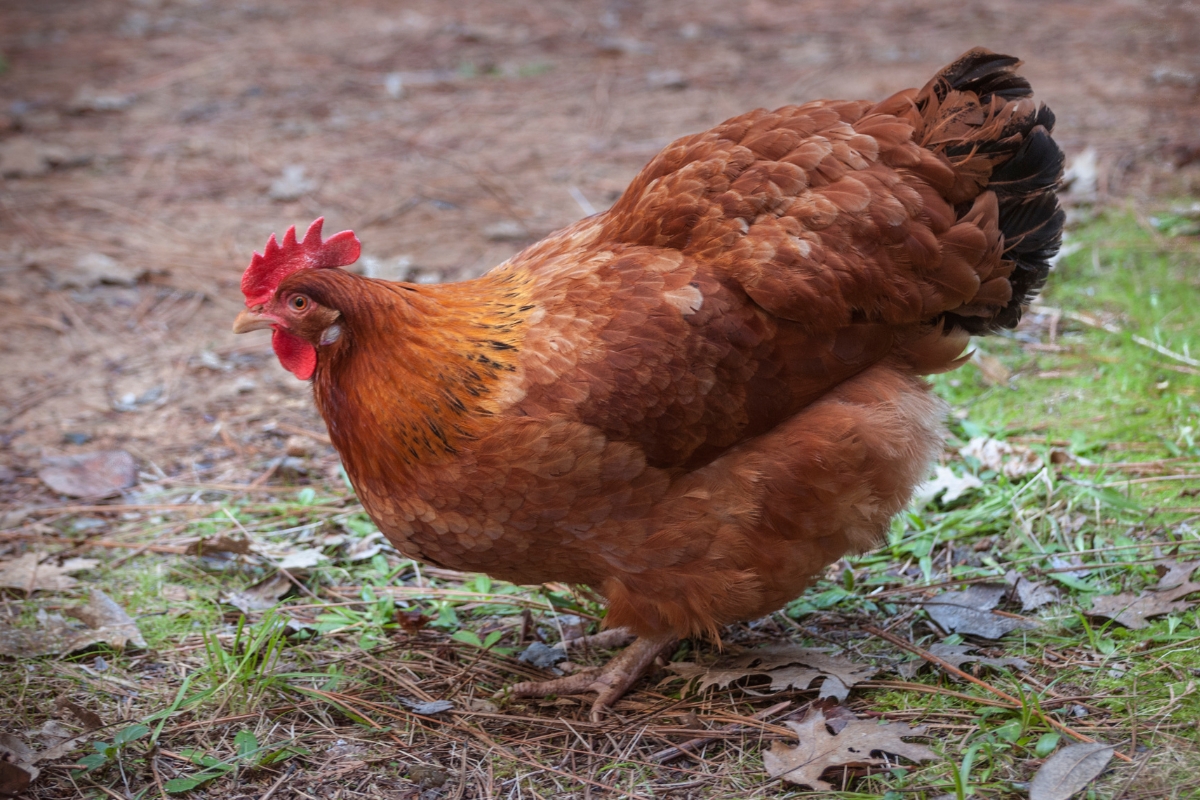
Plymouth Rock (Barred)
Plymouth Rocks are one of the best-known American breeds, and these heritage birds are treasured for their versatility. They were once a staple in the egg industry and have always been a favorite among backyard chicken keepers for their ease of care, resourcefulness, and good nature. Plymouth Rocks produce a good amount of meat and grow to 6-8 pounds. They also produce a good number of eggs, up to 300 per year if their surroundings are right.
Barred Rocks are happy in confinement or free-range. They don’t fly very well, making them good for urban farms. Barred Rocks are also very easy to keep as pets. My own Barred Rocks were the gentlest of the flock. They’re good foragers, so you don’t have to worry about spending too much on feed for their size.
To learn more, check out my detailed Plymouth Rock (aka Barred Rock) Chicken Breed Guide.
- Temperament: Friendly, calm, and curious
- Size: Average, six to seven pounds
- Eggs Per Year: 280 to 300
- Egg Size: Large
- Egg Color: Brown
- Lifespan: Six to eight years
- Time To Maturity: 18 to 20 weeks
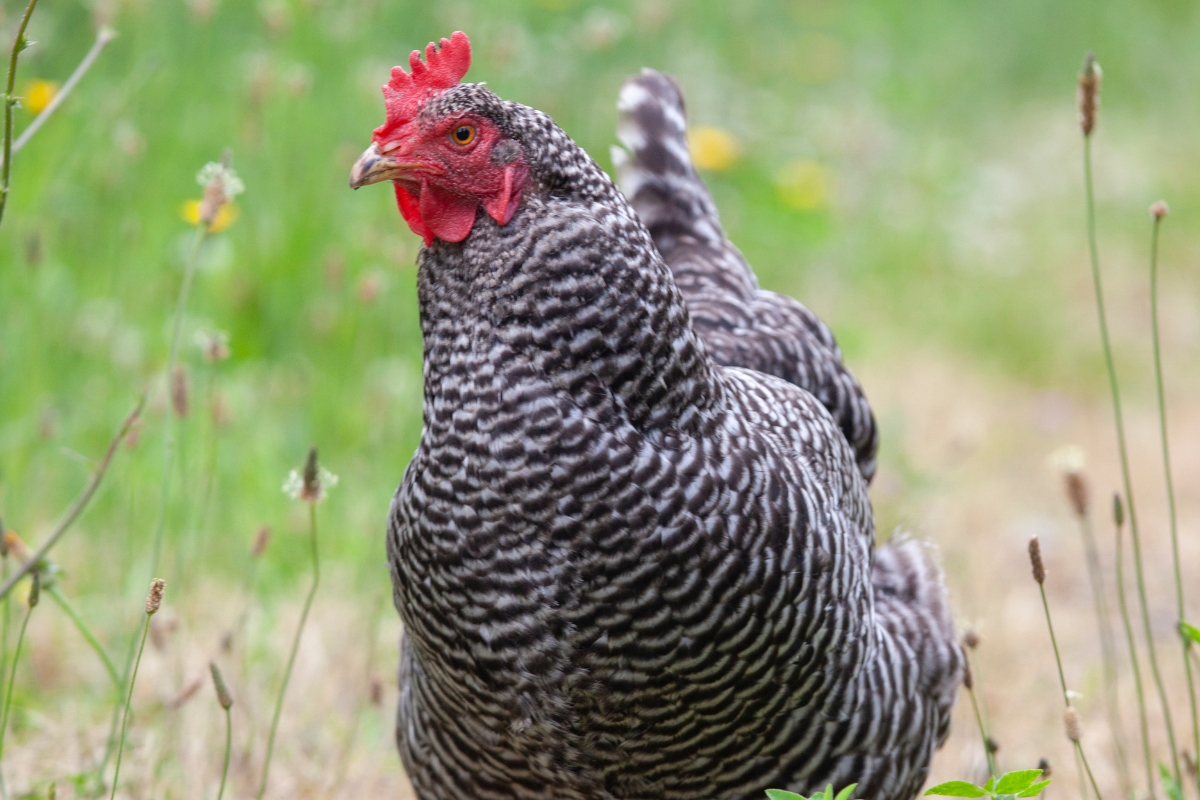
Sussex
If you’re looking for a bird that’s a reliable layer, meaty and tender, and has an impressive history as a heritage breed, the Sussex is for you. They lay up to 250 eggs per year, which is definitely among the high end of dual-purpose breeds. Sussex chickens also continue to lay during winter, when other chicken breeds usually take a break. Sussex chickens are on the bigger end, weighing 7-9 lbs, making them good meat birds that mature pretty quickly. They reach table size at around 20 weeks.
Their documented history goes back 2000 years to England. This heritage breed has always been a popular and reliable breed in many ways. They’re fine with living in the cold, don’t require a lot of space, and are friendly as can be.
- Temperament: Docile, mellow
- Size: Large, seven to nine pounds
- Eggs Per Year: 200-250
- Egg Size: Medium to large
- Egg Color: Cream, light brown
- Lifespan: Eight years or more
- Time To Maturity: 20 to 22 weeks
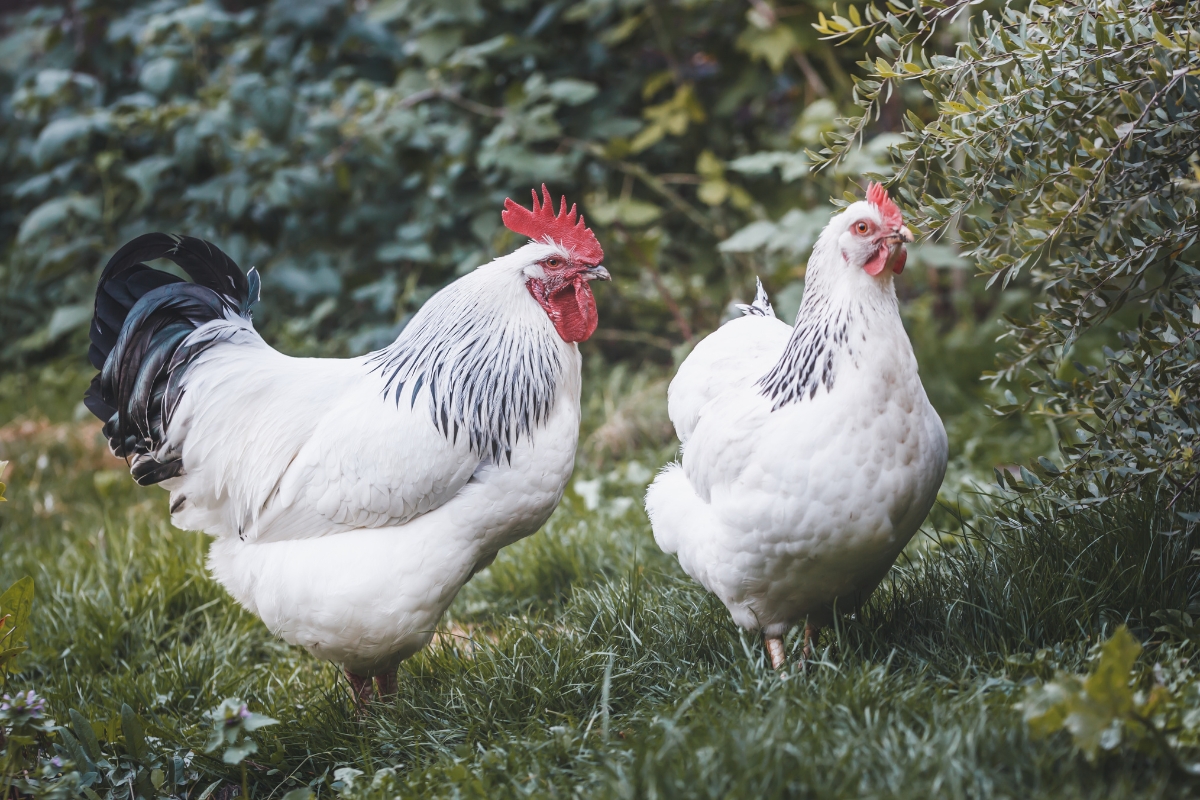
Orpington
Easily one of the most popular backyard chickens, the Orpington is one of the best dual-purpose breeds of chicken. These beautiful, hefty birds weigh 8-10 lbs, which certainly makes for a good dinner. Orpingtons lay around 200-280 per year, so they’re good for eggs as well as meat.
Orpingtons are also very gentle and sweet– these agreeable chickens are easy to keep both free or confined, and their quietness makes them great suburban pets. They’re prone to being bullied by aggressive breeds just because of how nice they are. Orpingtons are good foragers, as well, and will save you some money on your food bill.
To learn more, check out my detailed Orpington Chicken Breed Guide.
- Temperament: Docile, family-friendly, and relaxed
- Size: Large, eight to ten pounds
- Eggs Per Year: 200 to 280
- Egg Size: Medium to large
- Egg Color: Light brown
- Lifespan: Eight years or more
- Time To Maturity: 20 to 22 weeks
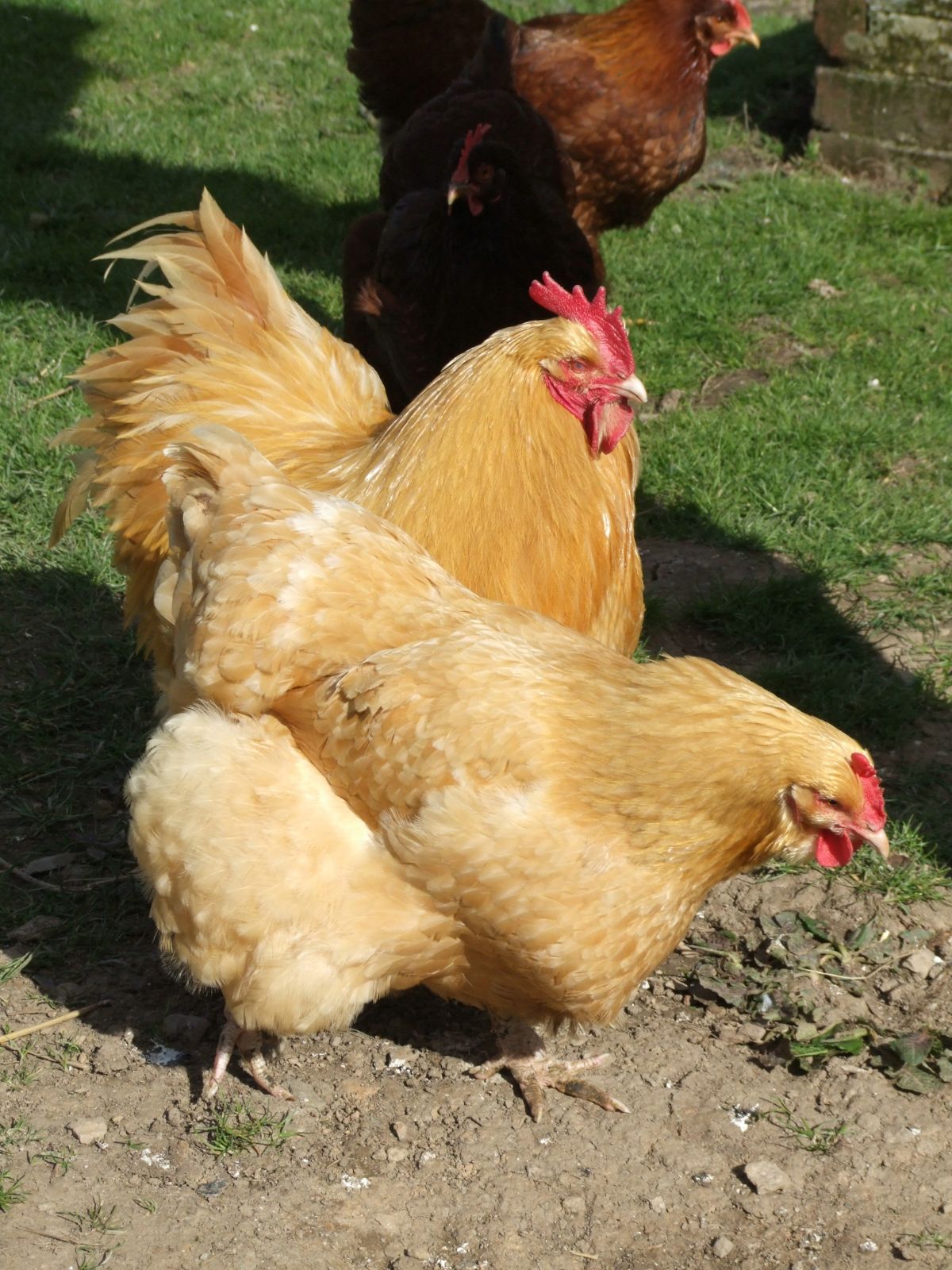
Australorp
The Australian counterpart to the Orpington, the Australorp is just as good as its American cousin at being a reliable dual-purpose breed. They combine the best of several layers, like the Rhode Island Red, Orpington, and Leghorn, and lay . Apparently, the world record for the most number of eggs laid by a chicken in a year was set by an Australorp, with 364 eggs per year! Australorps also weigh 6-10 lbs, making them perfectly suited to be a table bird. They mature quickly, as well. Australorps are hardy and make great foragers. There are so many reasons that you should add this superstar breed to your flock!
- Temperament: Calm, easygoing
- Size: Large, 6-10 lbs
- Eggs Per Year: 250-300
- Egg Size: Medium to large
- Egg Color: Light brown
- Lifespan: Eight years or more
- Time To Maturity: 20 to 22 weeks
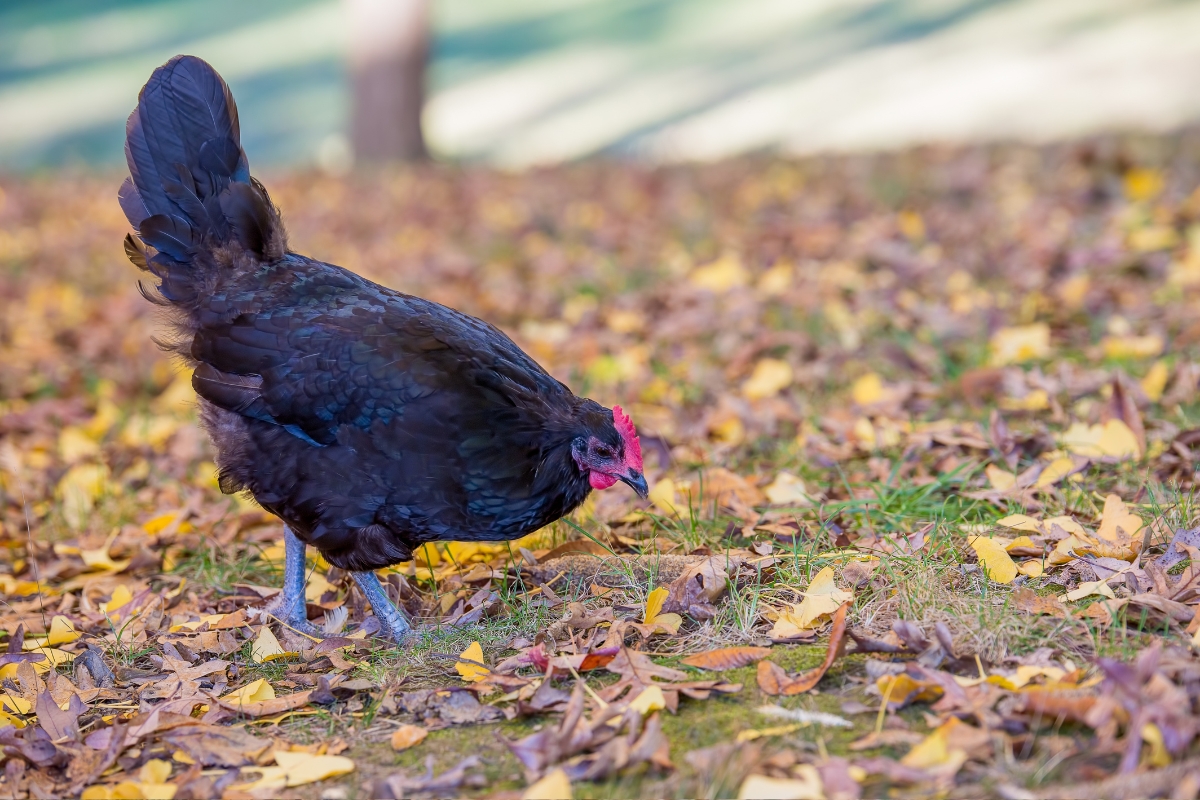
Wyandotte
The original dual-purpose chicken, the Wyandotte is definitely a breed you should consider if you’re looking for a good layer and table bird. Wyandottes were the first American breed that was developed specifically to be dual-purpose. Laying at a later age than most chickens, Wyandottes produce 200-260 eggs per year, which isn’t too shabby. They continue through the winter, as well, when other breeds will often take a break. Apparently, Wyandotte meat is delicious and tender. Wyandottes butchering age at 20 weeks.
Wyandottes are great in a free-range environment and are excellent foragers. They produce fewer eggs while in confinement. In terms of personality, Wyandottes are calm and indifferent, for the most part, and tend to be one of the more independent breeds on this list. They are usually at the top of the pecking order and will not take being pushed around by other chickens.
- Temperament: Aloof, calm
- Size: Medium, 6-9 lbs
- Eggs Per Year: 200 to 260
- Egg Size: Medium to large
- Egg Color: Brown
- Lifespan: Six years or more
- Time To Maturity: 20 to 22 weeks
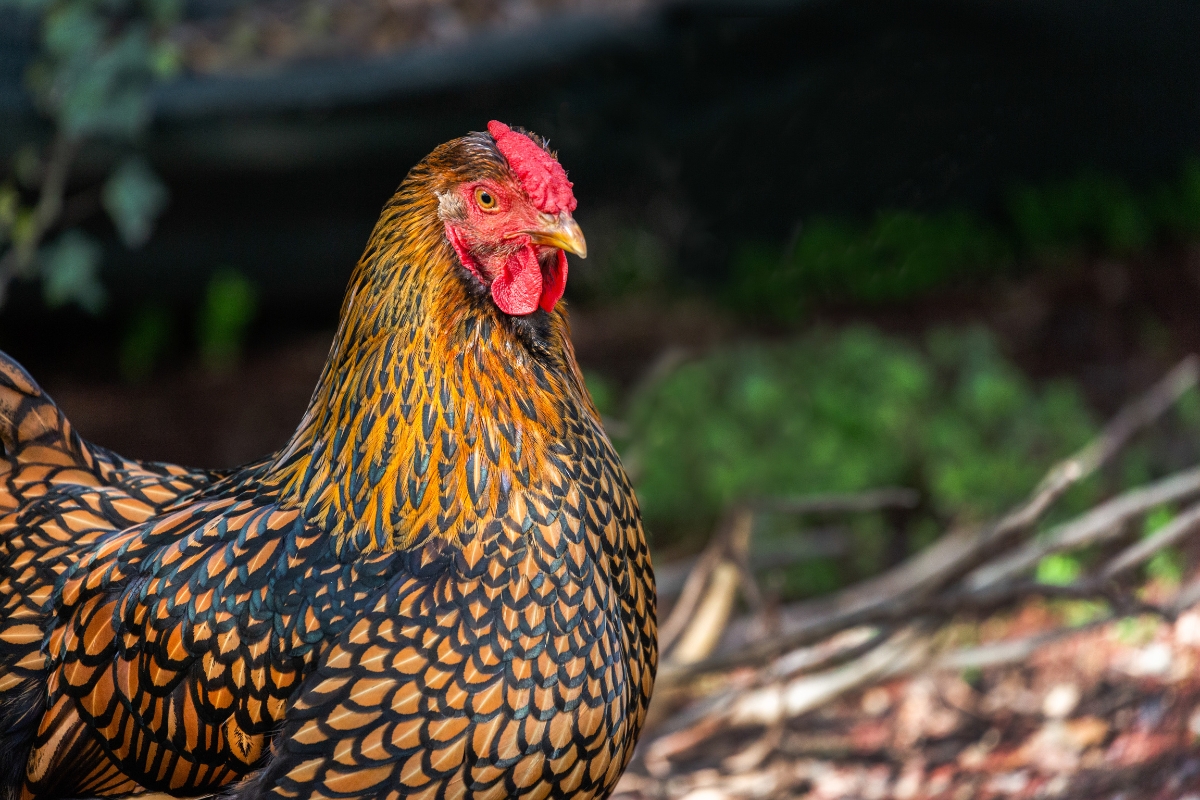
Chantecler
The Chantecler is a rare dual-purpose breed that was developed in Canada. Combining the best of egg-laying and broiler breeds, the Chantecler is a mix of White Leghorns, White Plymouth Rocks, Dark Cornishes, Rhode Island Reds, and White Wyandottes. The person who developed Chanteclers, a monk called Brother Wilfred Chatelain, created this breed to survive the harshness of Canadian winters. This breed will lay through the coldest months. While their focus was originally on their egg-laying capacity, their size also makes them good meat birds.
Chanteclers do not like being confined. They’re amazing free-roaming chickens but get stir-crazy if they don’t have access to space. Otherwise, Chanteclers are very agreeable chickens and aren’t aggressive, getting along with most of their flockmates. They’re usually quite interested in what their owners do with plenty of curiosity.
- Temperament: Intelligent, curious, calm
- Size: Medium, 6-9 lbs
- Eggs Per Year: 200 to 240
- Egg Size: Medium to large
- Egg Color: Brown
- Lifespan: Eight years or more
- Time To Maturity: 20 to 22 weeks
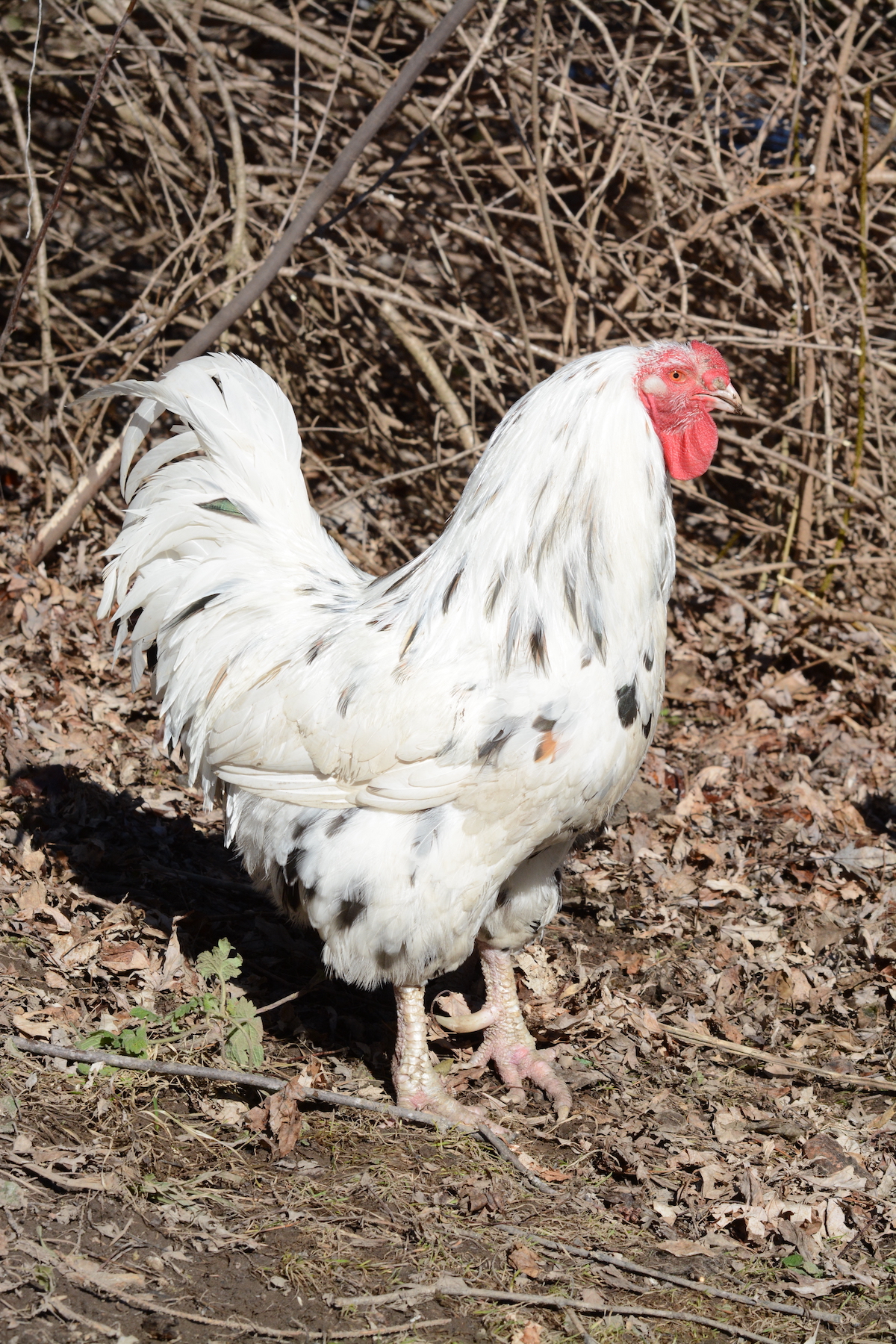
Faverolles
Faverolles are big, fluffy chickens with lots of heart. They’re amazing layers, producing 200-280 eggs per year, and are happy to lay through the cold winter months. They reach egg-laying age earlier than other heritage breeds at around 19 weeks. Faverolles are also good table birds, and at their full size reach around 6-8 lbs, although it takes a bit of time for them to grow this big. Their meat is tender.
Faverolles are active, busy birds, making them excellent foragers. They will gobble up bugs happily, meaning less to spend on chicken feed.
To learn more, check out my detailed Salmon Faverolles Breed Guide.
- Temperament: Docile and active, most enjoy being lap-chickens
- Size: Medium to Large; roosters average 8 pounds and hens 6 ½ pounds
- Eggs Per Year: 180 to 240
- Egg Size: Medium
- Egg Color: Light brown to cream
- Lifespan: 5 to 7 years
- Time To Maturity: 19 weeks
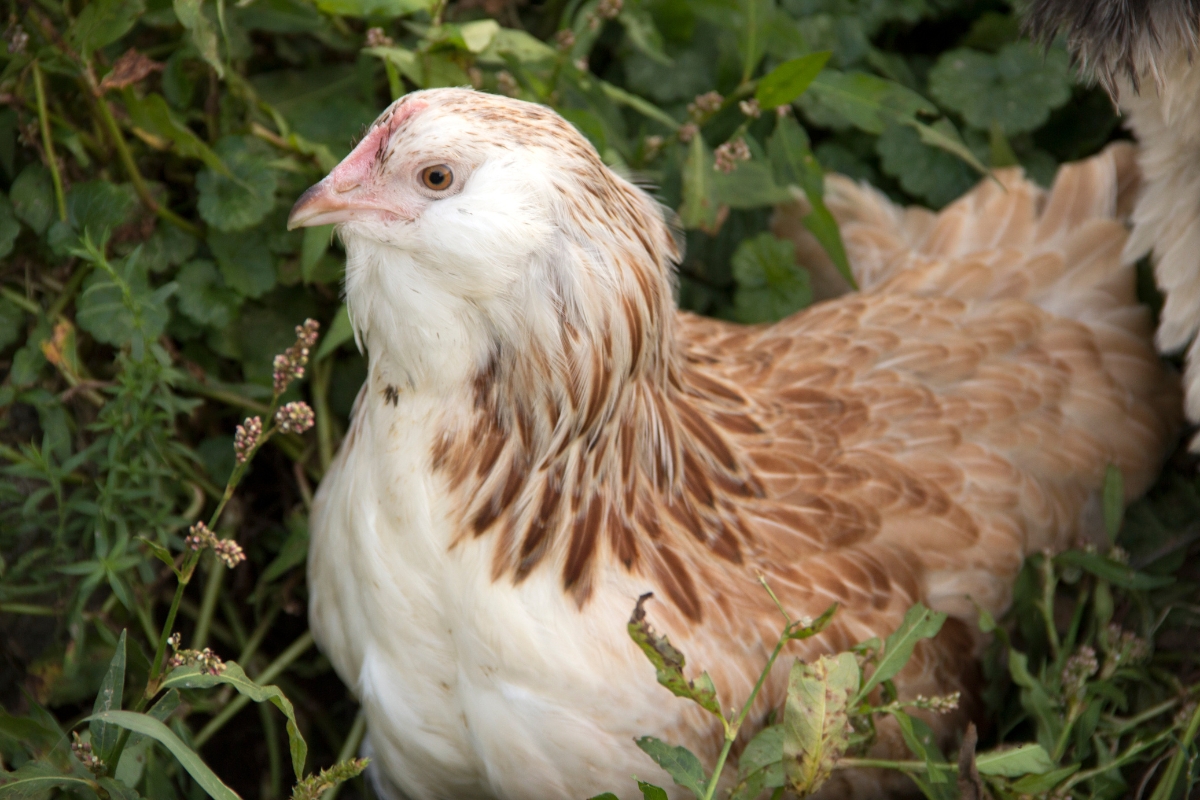
Dominique
America’s oldest chicken breed, the Dominique, has a longstanding reputation as a great dual-purpose bird The Dominique has been around since the 1700s, and is also known as the “Pilgrim fowl”, having lived among the first settlers in the US. Bred for eggs, meat, and, in the early days, for their soft feathers to be used in pillows, this is the original dual-purpose chicken. A Dominique produces 4 medium-sized brown eggs per week, or 230-280 per year. Dominiques also produce a fair amount of meat, reaching 5-7 lbs at maturity.
These chickens were made to be hardy and are amazing foragers. They’re happiest when they can roam free and catch bugs. Alongside their egg, meat, and pest-control capabilities, Dominiques also make good broody hens. It’s hard to go wrong with a chicken that is so versatile.
- Temperament: Calm, alert
- Size: Medium, 5-7 lbs
- Eggs Per Year: 200 to 280
- Egg Size: Medium to large
- Egg Color: Light brown
- Lifespan: Eight years or more
- Time To Maturity: 21 to 24 weeks
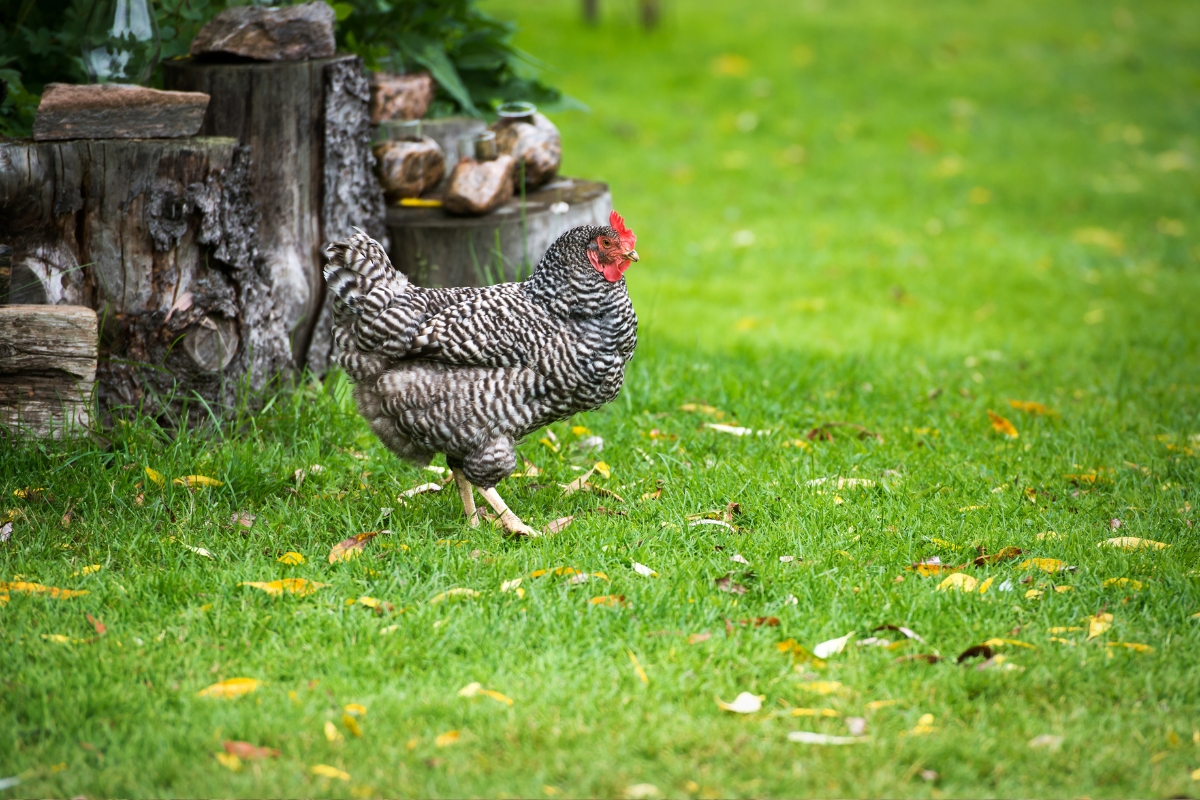
Brahma
Last, but certainly not least, is the big, beautiful Brahma. You wouldn’t be surprised that such a big bird would produce a lot of meat–a Brahma weighs between 8-10 lbs at full size. It takes a bit of time for a Brahma to reach this weight, so some people opt to butcher at 8-10 weeks. Despite being so large, Brahmas lay a surprisingly decent number of eggs, about 150-200 per year.
Brahmas are the perfect example of a gentle giant. They’re among the calmest, most confident breeds of chicken out there and are super family-friendly. They fare pretty well in the cold, but make sure to keep their feet dry to prevent frostbite. Brahmas are also happy to live in confinement or freely, but due to their size aren’t spectacular foragers.
To learn more, check out my detailed Brahma Chicken Breed Guide.
- Temperament: Laid-back, docile, easygoing.
- Size: Large males: 10 lbs; large females: 8 lbs.
- Eggs Per Year: 150-200
- Egg Size: Medium
- Egg Color: Brown
- Lifespan: 5-8 years
- Time To Maturity: 6-7 months for laying, can be used at 8-10 weeks for meat
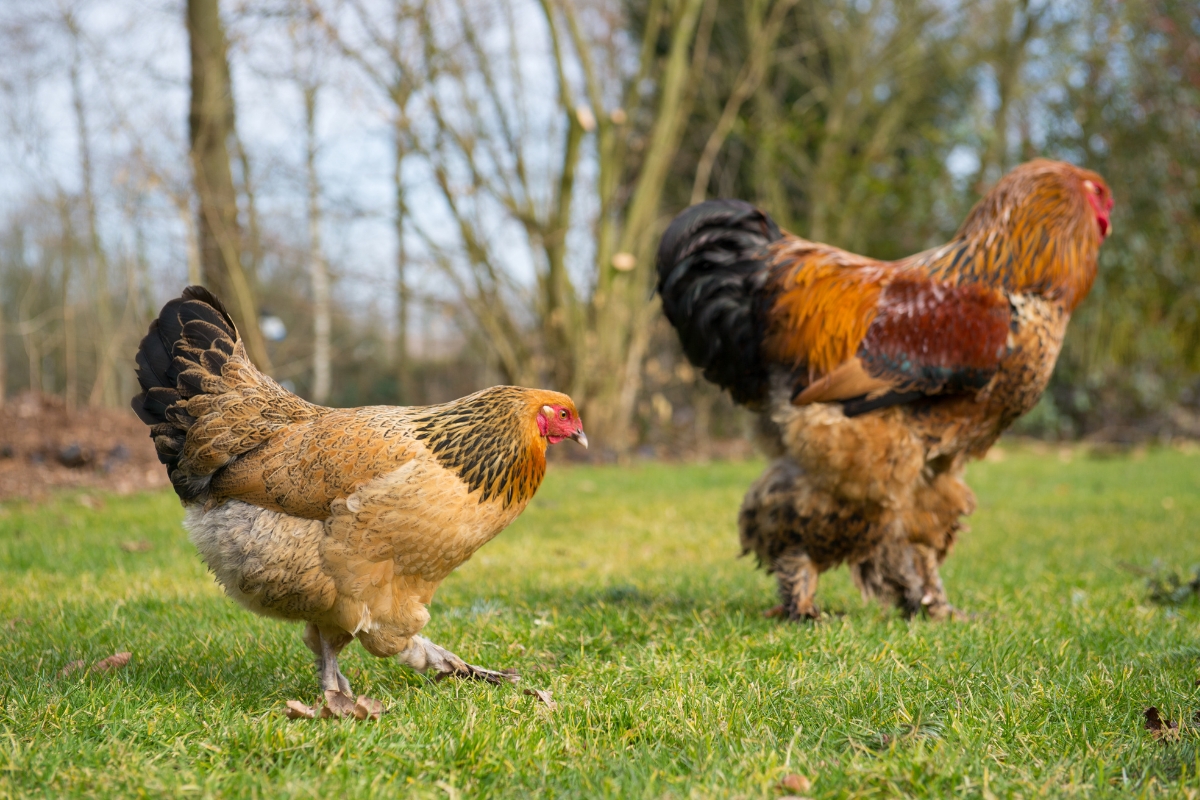
Chicken Keeping Guides
Looking for more chicken-keeping guides?
- How Much Does it Cost to Keep Chickens?
- Beginner’s Guide to Chicken Egg Colors
- What’s the Difference Between a Duck Egg and a Chicken Egg?
- How to Raise Chickens (Beginner’s Guide)
- How to Raise Baby Chicks into Adult Hens
- 12 Best Egg Laying Chickens for Beginners
